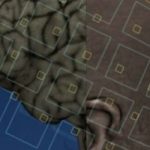The Transformations Promised By The Quantum Internet

(Forbes) The modern-day internet isn’t as almighty as once thought to be; instead, it has developed many vulnerability points that can easily be hacked and manipulated. The future of the internet holds a solution for prevention and fortification to protect the internet from hackers globally.
This solution is called quantum physics. While this is a solution that will become fully viable much later in the future, we have already arrived at the age where the capabilities of quantum computing and quantum networks can be proven possible, if not already applicable.
The U.S. Department of Defense has already released the first blueprint of a detailed game plan of their strategy to realize the concept of quantum internet in the next few years. The U.S. has also joined the EU and China in revolutionizing the area of quantum communications.
The quantum internet is essentially the network connecting quantum computers — or other devices — and allowing them to share information in an environment operating based on the rules of quantum mechanics.
the quantum world uses data encoded in quantum bits — or qubits — that are inherently different from the traditional coding of information into a sequence of 0’s and 1’s. Qubits, in contrast to bits, are not binary in their nature, meaning that they can, in fact, hold two states at once, rather than one at a time — a phenomenon known as superposition. And the quantum internet will essentially transmit qubits from physically distanced quantum devices.
One of the most promising areas where quantum mechanics promises a bigger shift toward the better is online security and safer communication.
Scientists have been looking for ways to increase the security of encryption and communication by making it more quantum-driven; the idea of quantum cybersecurity has been called quantum key distribution (QKD). At the basis of the concept is the process of communication between two parties, where the sender encrypts traditional data by encoding it onto qubits and transmits them to the receiver, who then measures the properties of the qubits to decode the information.
The reality of quantum computing in widespread use is years away. But even these advancements within the confines of experiments and tests indicate that companies need to begin to seriously think about internal and external digital transformation. It’s becoming more and more clear that success and competitiveness in the future will be defined by a business’s agility.


















